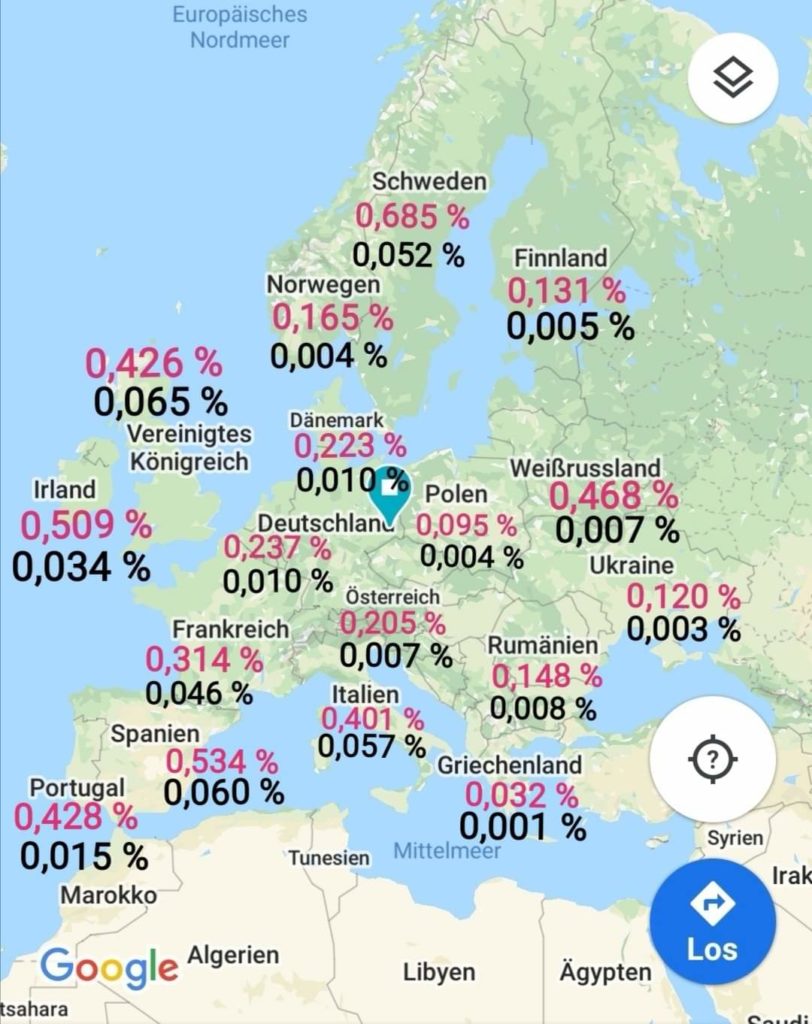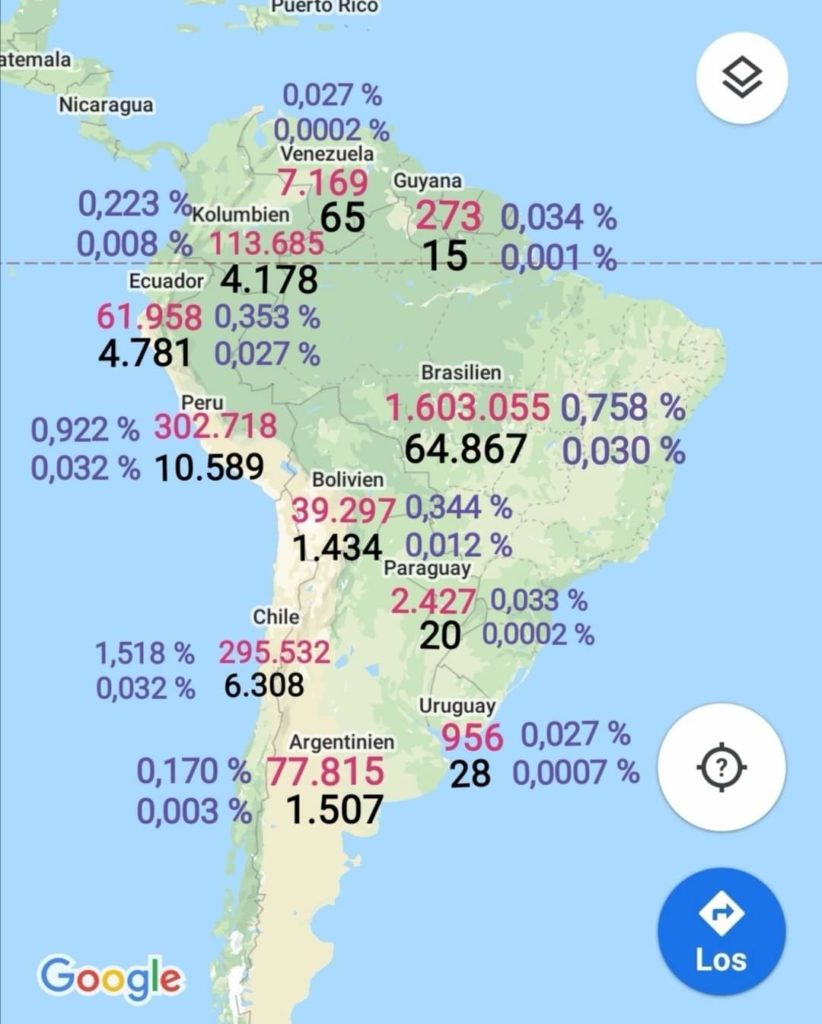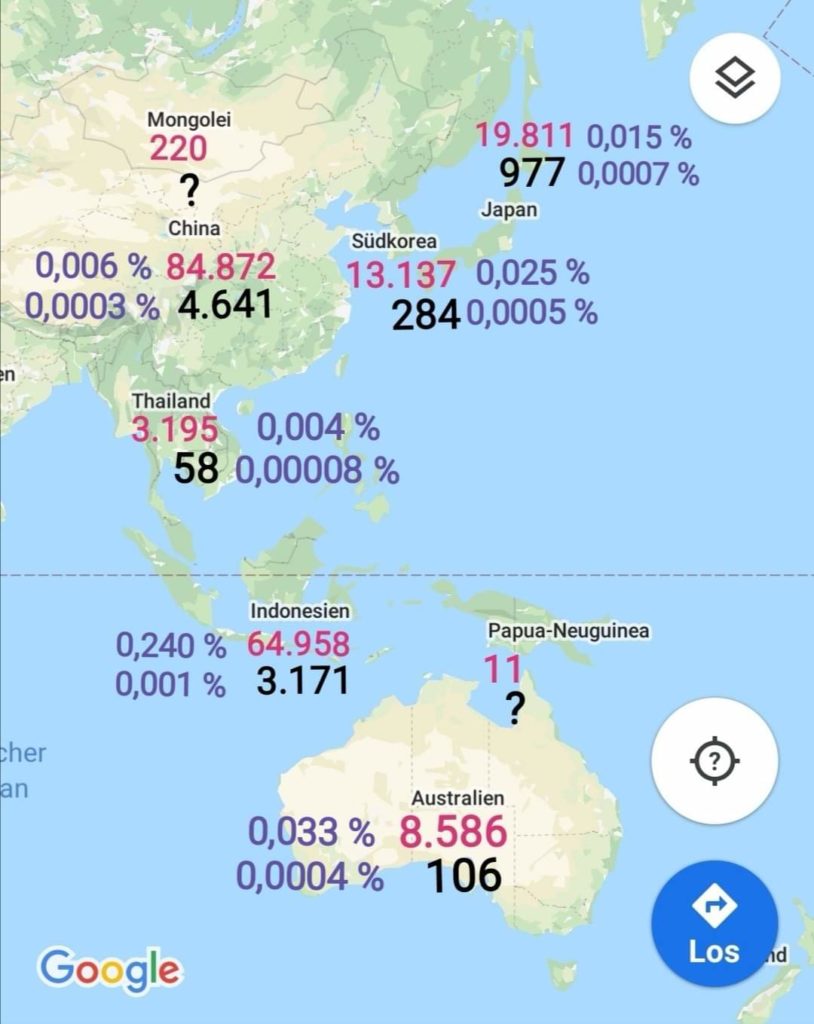“Killervirus” – data from Johns Hopkins Institute
Red = total infected and/or % of infected
Black = total deaths and/or % of fatalities in population
Nowhere was the 1% mark in deaths reached
By Ralph T. Niemeyer
Population from de.statista, the official German office of statistics.
The calculations were of course also based on the numbers from the JHI.
The countries are random, as they were shown by google.
The deaths in% are calculated in relation to the population. Otherwise there is no possible comparison.
The number of infected people is relative to the population, and yes, the death rate is also relative to the population.
Note: one cannot put the death numbers in relation to the number of infections or use them to calculate another ratio because
– not all people have been tested
– the number of infections contains false positives
The infection numbers are therefore not meaningful because they are incomplete.
The deceased are still significant and verifiable today. That’s why I put them in relation to the population.
Quite banal percentage calculation, without estimation or presumption and regardless of the number of infections.
If you were completely correct, you would have to subtract all those who died, which were incorrectly included in the statistics as corona deaths.
But that is not the point. Even the deaths mentioned do not reflect a “deadly pandemic” and certainly not a “killer virus”.
Meanwhile, it transpired that even hot-spot countries like Brazil this year did not have any deaths from yellow fever.
Like in Germany, where the Covid-19 “pandemic” miraculously has wiped out influenza as no deaths related to grip occurred this season.
Other parts of the world:
Source: http://eu-chronicle.eu/2020/07/which-pandemic/
Disclaimer
Some of the posts we share are controversial and we do not necessarily agree with them in the whole extend. Sometimes we agree with the content or part of it but we do not agree with the narration or language. Nevertheless we find them somehow interesting, valuable and/or informative or we share them, because we strongly believe in freedom of speech, free press and journalism. We strongly encourage you to have a critical approach to all the content, do your own research and analysis to build your own opinion.
We would be glad to have your feedback.




